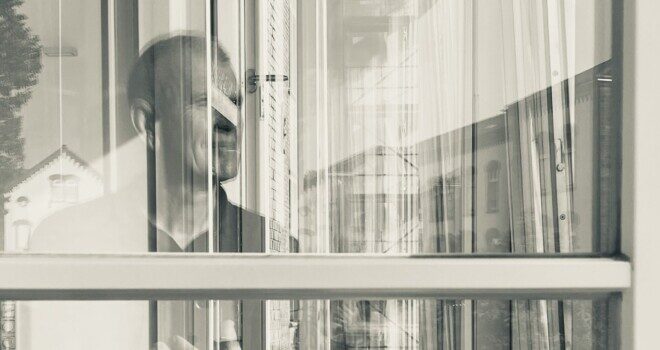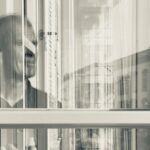Autism, Authenticity, and Admiral Virtues
I have always admired authenticity. I think the secret to being human is simply being the most authentic human you can be. As Catholics, human beings adopted by grace, we allow the Holy Spirit to work within us, (re)generating the most authentic person in us. In Mary, Theotokos, we find the most genuine model of […]



I have always admired authenticity. I think the secret to being human is simply being the most authentic human you can be. As Catholics, human beings adopted by grace, we allow the Holy Spirit to work within us, (re)generating the most authentic person in us.
In Mary, Theotokos, we find the most genuine model of authenticity, perfected by the presence of the most admirable Christian virtues: faith, hope, and charity.
Maybe authenticity is what Jesus is talking about when He sets the little child in the midst of the Apostles (Matthew 18:1-5). Be yourself. And in so doing, learn and grow in being yourself.
I think many of us who are autistic struggle with how to be ourselves in the midst of other people, as we each confront the various “selves” we learn how to be, often through masking. From a young age, I knew who I was. But then, as I became enmeshed in the lives of others, I became uniquely aware of how I was going to be myself (safely) around others, namely masking.
This would be something which would indeed demand careful curation of my self-identity and the formation (or failure to form) boundaries with others.
Boundaries in relationships for Autistic people are a precarious and persistent demand we may sometimes avoid. Look up pathological demand avoidance (PDA), alternatively known as persistent drive for autonomy, to better understand why you might, as many people do, fight, fly, freeze, or fawn in order to negotiate a particular demand being issued in the context of a valued family or social relationship.
So, yes, from a very young age, I liked me, but I was the only one among a select few. And as I expressed myself, I learned there were others, too (some whom I found in the theater), who enjoyed being themselves like me without the wildest whim of concern for what others thought about them. I admired their courage. And so, I made friends with the “weirdos” and people who didn’t feel compelled to conform to the norm of traditional social expectations.
As I learned more about myself in my teen and young adult years, I could see that the self I liked was going to find himself at odds with so many others’ expectations. Still, I knew in my heart of hearts that to be one’s self, authentically, was to be most fully human.
It was then that, for what I truly believe was the first time, the Mystery of God, the Light from Light, captured my full attention. My beloved transfigured Jesus. While hoping to be my most authentic self, I began to learn about Jesus and to truly love Him.
My beloved transfigured Jesus, I trusted, would accept me, teach me, and lead me into the fullest sense of an authentic life beyond my wildest imagination. After all, Jesus is God, and God is both Light and Love (1 John), both Divine Wisdom and Divine Mercy.
During this time of becoming an adult (years 22-30), I trusted and learned to be more myself, love myself, and bask in the light and love of God. Sometimes it even hurt. But a good hurt.
Into my 30s and 40s, this new life would be reflected in the livery written about by St. John of the Cross (White, Green, Red), the Theological Virtues (Dark Night, Book 2, Chapter 21).
And then, St. Teresa of Jesus began her visitation with me through a novena in 2019; she transformed my prayer life in a most simple way. She drew my soul even deeper into the Jesus Prayer which had become integral to my prayer life, as I prayed for faith (Lord Jesus Christ), hope (Son of the Living God), and charity (have Mercy on my, a sinner).
Depression, however and whenever it finds its way into our lives, is difficult. I think from the time the pandemic began, and as I was struggling to be at home in my body, my depression became a heavy blanket I couldn’t get out from underneath. I started working with a therapist in 2021 and 2022 more intensely. Eye movement desensitization and reprocessing (EMDR) and dialectical behavior therapy (DBT) have been transformational.
Diving deeper into my psychological life through books and therapy, I noticed that a clear alignment with the neurodivergent community was becoming ever clearer. We didn’t have as precise a word for ourselves in the 90s and early 2000s, nor did we have the respect for our community (and we still have a long way to go to truly form a culture of life).
Across a year, I came to a place in my life where I knew I needed an assessment.
And so during the summer of 2023, I located a clinic that would be neuro-affirming (meaning, they wouldn’t simply prescribe a diagnosis, instead, they would listen to and form with me, the patient, an accepted understanding of my human psychology in a more interpersonal manner, coming to a diagnosis together, with a kind of mutuality and agreement. This type of affirming health care, for which I am truly grateful, and I hope we all can find, allows for a new form of self-advocacy in the vulnerability of the medical space.
Then, I received the call on 8 August 2023, feast of St. Dominic. I was, indeed, Autistic (while also acknowledging my depression and beginning to work through complex PTSD). It served to form a new stage in my life that, as a late-diagnosed Autistic adult, I hope to now share with others, so that others may, in turn, be inspired to reach out and share their own stories with even more Catholics who are just beginning to discern, already self identifying, or have been through a diagnostic process acknowledging their Autism.
May the transfigured Jesus inspire our collective journey as we share life with one another.
Author’s Note: We are Autistic Catholics, and we’re hoping to be a gift to every parish, diocese, and eparchy in the United States (perhaps someday, worldwide) to enrich the diversity of our Catholic witness in the Body of Christ.
Photo by Peter Schulz on Unsplash














